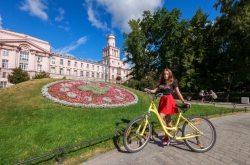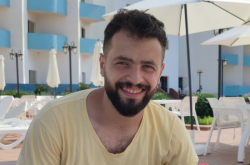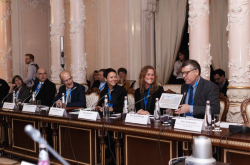Focusing on the study of information and communication tools in cultural and institutional contexts, Social Informatics involves an element of forecasting. To teach students this essential skill, ITMO lecturers created a business game organized in the format of a foresight session. The rules are simple: all you have to do is pick a field that interests you and carry out a market analysis.
For the third time, the game was coordinated by Andrey Chugunov, Director of ITMO’s E-Government Center, together with Natalia Lukovnikova, Director of ITMO University’s Research and Technology Foresight Center. Foresight session is the final stage of the business game, which lasts for two months. During this time, the participants study the legal framework of their chosen field, read scientific literature and analyze the market. This year, all the students were split into three teams, each focusing on one particular field such as urban studies, healthcare system, and transport and logistics of smart cities.
“The main thing we teach our students as part of this game is to analyze information. The thing is that to implement projects in the field of state and municipal informatization, you have to be a good analyst and be able to develop solutions to modern challenges. In this business game, I act as a ‘customer’ who plans to allocate a lot of money for analytics. For example, a big corporation wants to enter the market and it requests a comprehensive analysis of this market for this purpose. Participation in the game brings many benefits for students, as they can both acquire new skills and use the results of their projects in their Master’s theses,” shares Andrey Chugunov.
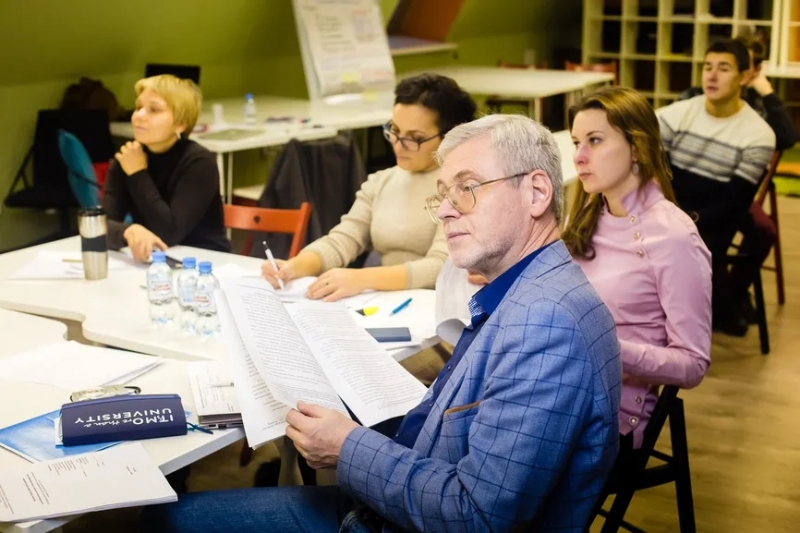
According to the experts, the main advantage of this game is that it allows students to first get a general insight into the problem and then proceed to a more practice-oriented training, during which they can use the results of their market analysis to make forecasts.
A trend is a change or development towards something new or different, which can be measured. To analyze trends, you have to have a thorough understanding of all the processes taking place in your field of study. For instance, if you specialize in healthcare, you not only study the incorporation of digital technologies in this field but also other factors such as migration, demography, incidence rates, and so on, notes Natalya Lukovnikova.
“The students are asked to find as many trends as possible, which can then be divided into categories, for example, technological and demographic trends. Based on the trends found during the first stage of their research, the participants describe possible threats and opportunities. It’s not enough to see a trend to say if it’s good or bad; you always compare it with other trends. For one, the implementation of digital solutions in healthcare brings both advantages (less routine work) and drawbacks (some professions can disappear and people will lose their jobs). When talking about threats and opportunities, you have to see the bigger picture. For example, to solve the problem of job loss, we can invite people to participate in retraining programs. We don't ask the participants to develop a list of solutions for each and every problem, they only have to get their heads around the general trends in digital development in different areas,” explains Natalya Lukovnikova.
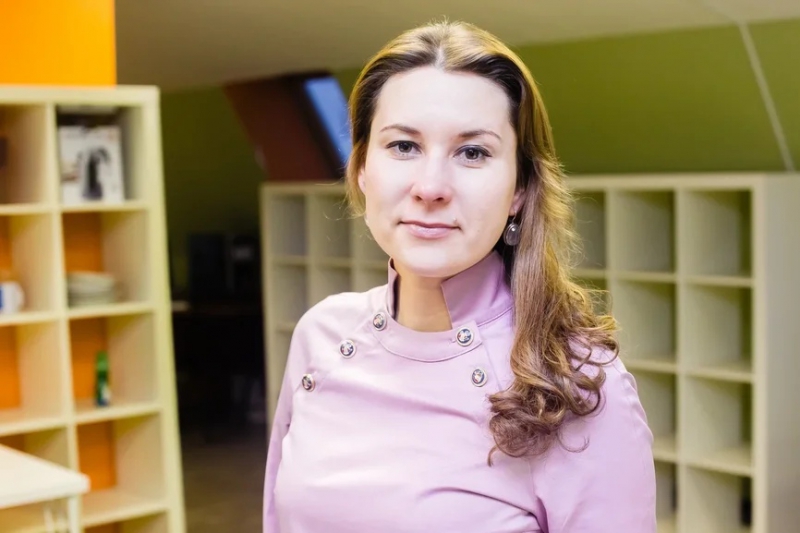
“I think that it’s our students who will be the main engine for progress in the future. They are active and motivated, and ready to make the world around them a better place. They live in a new reality and transform this reality to suit their needs. They aren’t afraid of being misunderstood and rejected by society. They live in the world in which individuality is valued and respected, they want to understand their mission, their place in this world, they want to change something. That’s why we have to support such initiatives,” explained Natalia Dolgova, Head of the Project Office of the St. Petersburg Medical Research and Information Center.
Informatization in city planning, project ‘It’s all near’, potential customer: a building company
The students found several problems in the field of urban planning: bureaucratic procedures, many competing departments with similar competencies, the lack of social infrastructure, and corruption. To solve all these problems, the participants proposed to improve the existing infrastructure and develop a new one in five steps.
The first step is to collect data on all the changes in legislation. The problem is that building companies often learn about such changes when it’s already too late and the construction process has already begun. The second step is to analyze the existing objects in regard to their social infrastructure. Based on this data, new development solutions are being developed using neural networks.
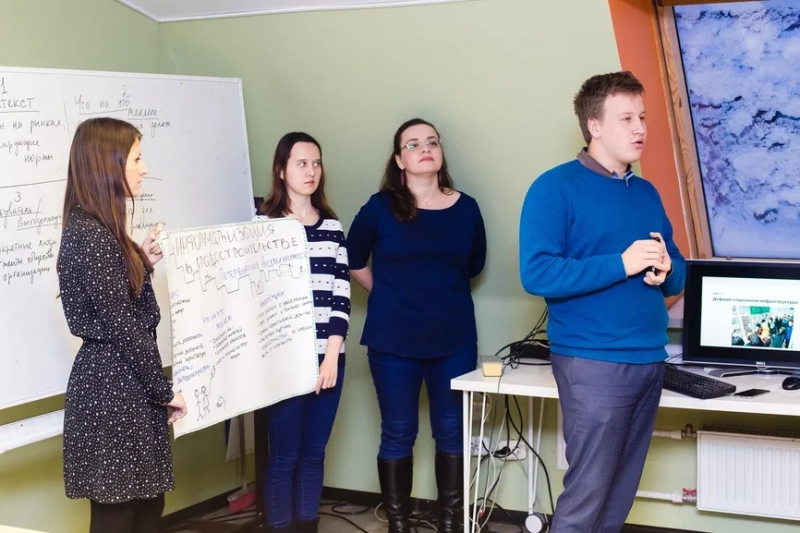
The next step is the development of a new social infrastructure for new buildings. In this case, you have to analyze the infrastructure which hasn’t been created yet and come up with the best options for a particular house and its residents.
“The development of social infrastructure has to keep pace with the development of business and residential areas. However, the problem that arises here is that the development of the city territories follows the General Plan, the city development plan for many years ahead, which cannot be changed easily. It is possible that applying neural networks to developing a digital model of the whole city or even a specific residential area will eventually be used to change the status, objectives or capacity load of social objects, but hardly likely for construction planning,” explained Marina Nechai, Deputy Director for digital transformation at the state unitary enterprise ‘ATS Smolnogo’.
Big Data in medicine, project ‘Medicine in the rhythm of the 21st century’, customer Leningrad regional clinic hospital
As part of this case, participants were asked to identify upcoming medical trends to inspire projects to be introduced in the Leningrad regional clinic hospital throughout the 21st century. Main suggestions included an electronic medical card as a primary source of a patient’s medical record, as well as a mobile electronic card. The former concept implies a three-level system of medical data transmission: upon visiting any of the local hospitals, a patient will have their medical card updated with records which will then be passed onto the regional, and, consequently, federal medical services. The trend for the introduction of mobile electronic medical cards implies active development and widespread use of cloud services in the field of medicine.
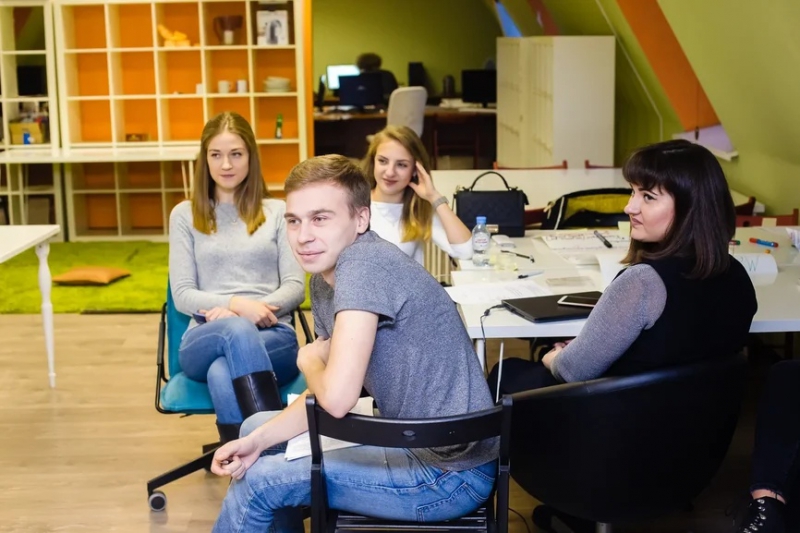
Other trends named were the use of VR in medicine, both for minimizing the pain threshold and diversifying the entertainment offered to patients in hospitals; health journals as aggregators of information gathered from patients’ health trackers into one single network; telemedicine, used for remote medical counselling and treating of patients; 3D technologies, used for the prosthetic care and creation of body organs using a 3D printer; genetical forecasting for identifying possible illnesses in a child based on the analysis of genes of their parents; robotization of medical processes, from booking appointments to taking blood tests and carrying out simple operations; and, finally, neural networks, used for preventative diagnostics and medical analysis. According to the participants, these trends will account for the decrease in genetic diseases and face-to-face doctor-patient interaction, as well as in the need for organ donors, part of which will be replaced by the increasing use of 3D technologies.
“It is important to mention the risks, for if there are trends, there will be risks linked with the expansion of these trends. You also have to study the existing legislation thoroughly to understand the degree to which all these trends could be implemented in day-to-day medical practice. Above all, it’s necessary to deal with issues presented by the current private data protection law, because it is this that prevents us from using cloud drives in medicine, thus being a significant obstacle on the way to effective digitization of this field. There is also a gaping disparity between the global healthcare trends and the everyday reality of our hospitals. I believe that changes can be made, but such a process should be an incremental one; we should tackle the digitization of one type of data first, then move to another,” commented Anton Shugai, Director of the brdt.pro blockchain laboratory.
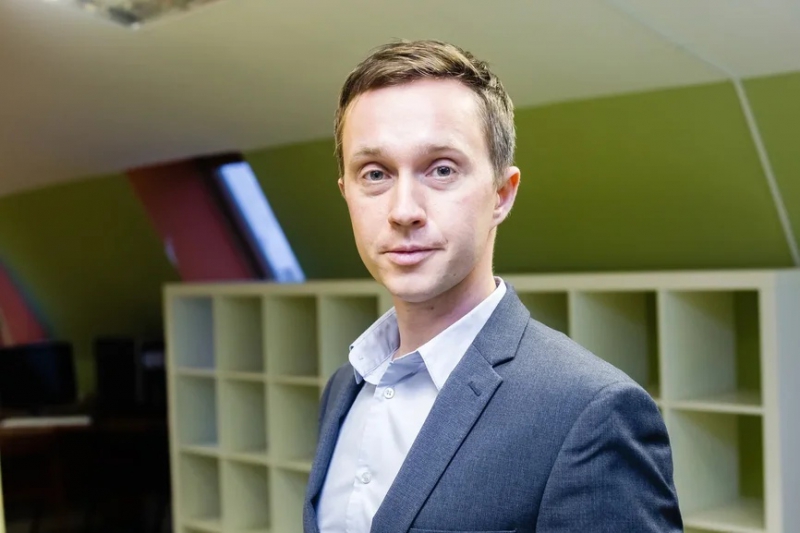
“Implementation of these technologies could allow us to make a crucial shift to participative medicine. By providing a patient with information on their health and course of treatment recommended by medical professionals in a form that they find the most convenient, be it through mobile devices, personal account, or remote medical consultations, we’ll nurture the trend for living a healthy lifestyle and increasing patients’ commitment to the treatment prescribed. On the other hand, by giving doctors access to the full profile of their patients’ health, we’ll increase the quality of the treatment provided,” said Natalia Dolgova.
Logistics and transport of smart cities, a project on improving traffic capacity of road networks commissioned by the Government of Moscow
Among the main trends indicated by the participants here are that the rates of car production are surpassing the rates of population growth and that the time spent on commute is increasing due to the urban growth and increase in traffic volume, with the traffic flows becoming more and more unstructured and complex. Also noted is the emergence of new smart transport network markets in the field of passenger and cargo traffic operations, as well as the development of driverless cars. Though oil fuel continues to be the main energy source for vehicles, the future belongs to electric transport. Alternatives to cars, such as kick scooters, hoverboards, monocycles and classical bikes, are also becoming more and more popular.
Additionally, students noted the rise of new transport technologies aimed at exploring vehicles’ interaction abilities. One of the most prominent ones here is the Connected Car concept, which encompasses a range of technologies enabling the communications between vehicles and objects of transport infrastructure. Also winning the ground are driverless cars, though the prospect of inhomogeneous traffic flows consisting simultaneously of people-driven and driverless vehicles is not a risk-free one; there are suggestions that this can lead to a surge in road accidents, and it’s not clear how artificial intelligence can be trained to react to human actions during emergency situations.
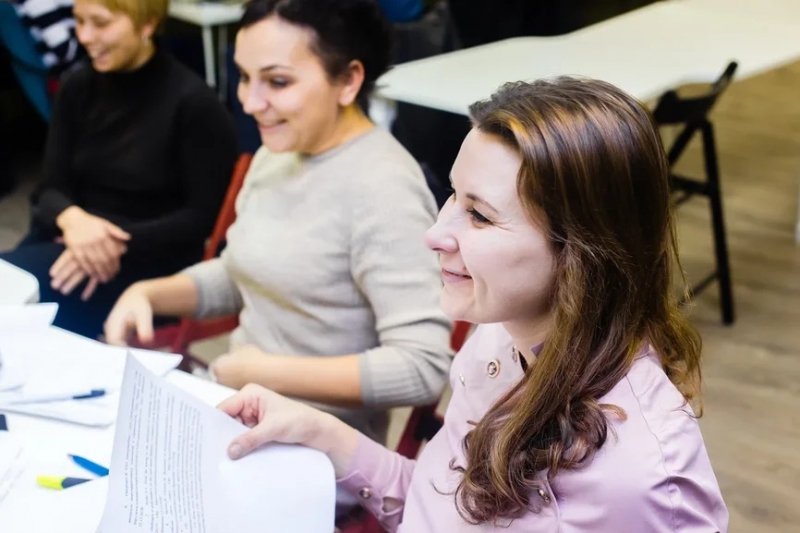
The students proposed creating a legislative framework regulating the field of driverless transport and advancing regulations for existing types of transport as one solution to these developments. They also spoke in favor of moving beyond the system of full import substitution to creating a national system based on best international practices.
“I commend the students on their thoroughgoing approach to exploring trends spelling out the emergence of new types of transport, but their representation of the role information technologies play in bringing about the final result was lacking, and this was the main topic they were commissioned to examine. I would have liked to see a more specific description of goals the proposed projects aimed to achieve. What will users get as a result? What will the managers? What will be the overall benefit? If we take healthcare project as an example, the introduction of interdepartmental data exchange or new online services will lead to a decrease in unnecessary medical visits, and this is a result we can measure,” commented Natalia Dolgova.
Drawing on the scientific and research potential of ITMO’s eGovernment Center, the University’s State Information Systems Management Master’s program was launched in 2011. In September 2018, both the Center and the program became part of ITMO University’s Institute of Design and Urban Studies.



